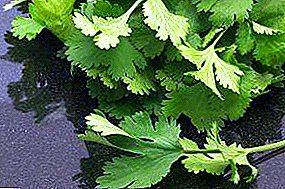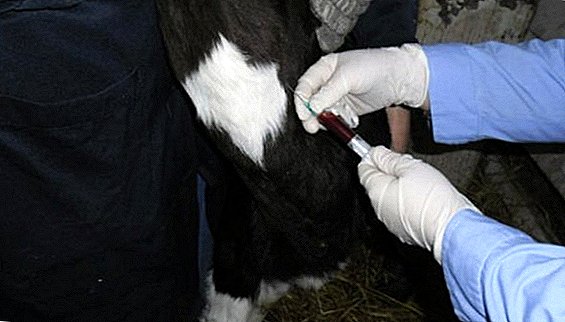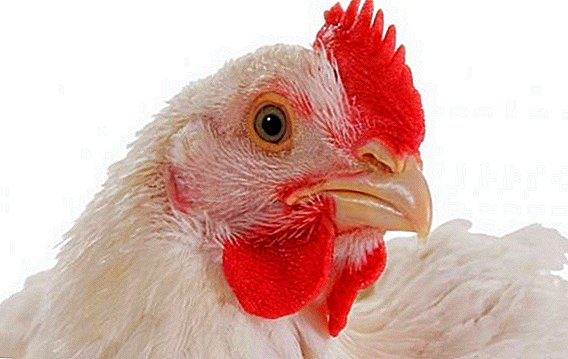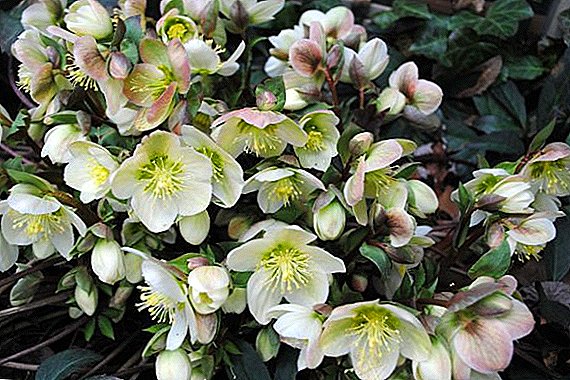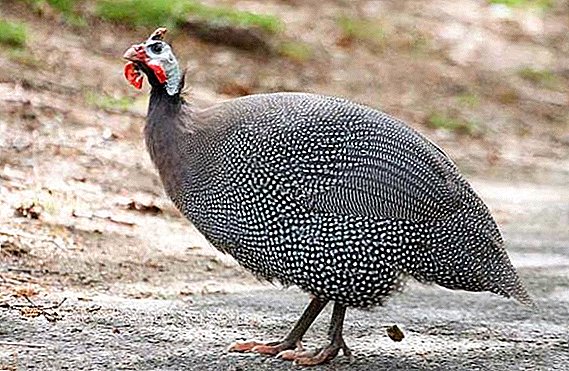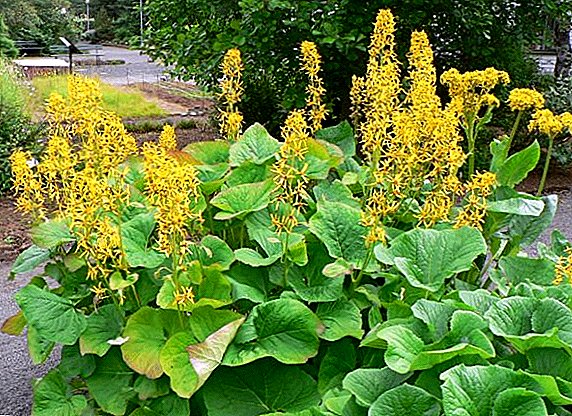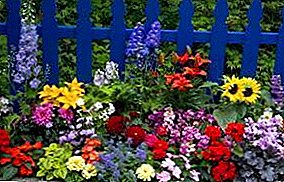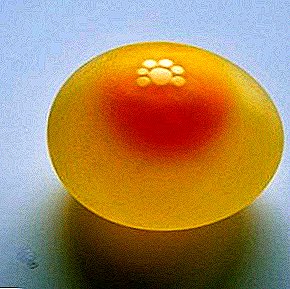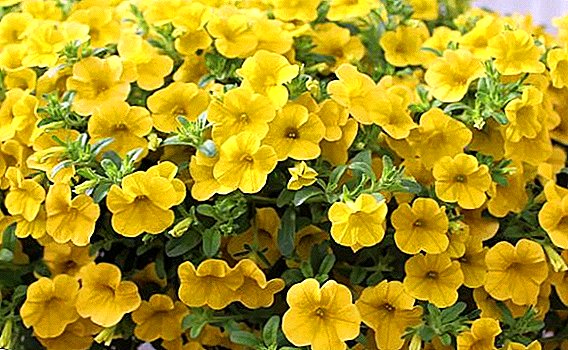 Wishing to give their balcony, a summerhouse or a multi-tiered flowerbed a particularly bright and festive look, many growers opt for the ampelous plants, which fall picturesquely from hanging pots. However, in addition to petunias, fuchsias, geraniums, viols and vervains, which have been customary and long known in our area, today you can buy much more interesting varieties of this kind of flowers. An excellent example is the bacopa, which will be discussed in this review.
Wishing to give their balcony, a summerhouse or a multi-tiered flowerbed a particularly bright and festive look, many growers opt for the ampelous plants, which fall picturesquely from hanging pots. However, in addition to petunias, fuchsias, geraniums, viols and vervains, which have been customary and long known in our area, today you can buy much more interesting varieties of this kind of flowers. An excellent example is the bacopa, which will be discussed in this review.
Botanical description and application of a flower
Bacopa, better known in Europe as suter, is the common name for perennial creeping plants of the nornichnik family, which includes, according to various sources, from seventy to one hundred different species.
Did you know? It is interesting that in the Bacop clan there are a lot of representatives living in the water - hydrophytes, only roots in the water, and hydatophytes, completely immersed in it. Some of these species are even used as aquarium plants.
Tropical and subtropical zones of Africa, Australia, Asia and America are home to plants.

For most species of bacopa, the following morphological features are characteristic:
| Stems | Numerous, thin, creeping or creeping, intensively expanding with the capture of a vast area. The length of the stem can be from 10 to 70 cm. |
| Leaves | Small, lanceolate, in the form of a regular or narrowed in the upper part of the oval, sometimes serrated on the edges. Are arranged in pairs or alternately. The color is bright green or olive. |
| Inflorescences | Single, axillary. |
| Flowers | Small sizes (up to 20 mm), numerous, in the form of a tubule or bell with 4-5 petals. Located along the entire length of the stem. Color is white, pink, red, blue, blue or purple. |
| Fetus | Boll flat shape. |
| Root system | Superficial, fibrous type. |
Some varieties of bacopa are used as medicinal plants, as well as in cosmetology. But most often the use of this flower is limited to decorative purposes - the suter can not only be grown in pots and hanging pots, but it can also decorate the shores of natural or artificial reservoirs, as well as planted on flowerbeds or alpine slides as a ground cover plant.
The success of the use of bacopa in landscape design is due to the duration of abundant flowering, which can be observed throughout the warm season - it begins as early as May and ends after the onset of frost.
Important! The intensity of flowering Bacopa is directly proportional to the age of the plant: with each subsequent year of life the number of flowers on the stems steadily decreases. For this reason, although the suter is many years old, it is better to plant it again each year.Bacopa was imported to the countries of Eastern Europe relatively recently, and so far remains little known, but the popularity of ornamental plants is increasing from year to year.
How to grow from seed
Like many other flower beds, the suter does not sprout well when sown in open ground, so it is best to grow it through seedlings. This process does not present any particular difficulties if you know the basic rules and some secrets. 
When to plant seedlings
Suter seedlings are formed for quite a long time, so sowing work could begin in late February - early March. However, the light-loving plant develops very poorly when the day is not long enough: its stems stretch out, become thin and weak, and after planting in open ground, such seedlings do not form the expected luxuriant carpet for a long time and are in no hurry to bloom.
To solve this problem, it is possible to provide the seedlings with an artificial light regime, but if there is no such possibility, it is more correct to wait with the sowing until the end of March - the beginning of April. In this case, the shoots will appear later, but very quickly make up for their stunted and painful "brethren".
Did you know? Bacopa leaves are comparable in size to the English penny (another name for the coin is penny). For this reason, in the UK, this plant is often called the Indian penny, and given that it grows close to water, it is called a swamp or water penny.
Capacity
Bacopa can be grown in any container suitable for seedlings. Some gardeners for this purpose use plastic boxes or boxes with low sides, others prefer to sow the seeds in single cups, and try. Special cassettes for seedlings, in the assortment presented in stores or in the markets, are also very convenient.
There is also an opinion that the easiest way to ensure the optimum soil moisture for the delicate roots of the growing suter is if the seedlings are grown in containers made of transparent material - plastic or glass. However, in general, it can be said that there are no strict requirements for the selection of containers for germinating Bacopa seeds, it is much more important to choose the right soil mixture and ensure the shoots with optimal lighting conditions, temperature and humidity.

The soil
In order to grow seedlings of bacopa, it is necessary to prepare two types of substrate - the soil mixture itself and drainage, which must be placed on the bottom of the tank to prevent stagnation of water in the soil. Claydite, which is usually used for this purpose, is poorly suited in this case, since it will be difficult to get rid of it when it is transplanted into open ground. The optimum drainage material is coarse river sand.
Important! If you put a thin layer of charcoal (1-2 cm) on the bottom of a box or cup for seedlings, you get a wonderful drainage, which, in addition, will provide the young overgrowth with additional disinfection and, which is also important, will enrich the soil with potassium necessary for any plant.The soil mix for growing seedlings of suture should be light and loose, have good moisture permeability and a neutral or slightly acid reaction. It is also important that the soil be rich in humus and all nutrients.
Prepare a suitable composition by mixing the following components:
- leaf earth - 1 part;
- peat - 1 part;
- sand - 1 part;
- humus - 2 parts.
Before planting the seeds, the soil mixture should be disinfected. This can be done in three ways:
- Heat in the oven at + 70 ° C for 1.5-2 hours.
- Withstand a day in the cold no less than -10 ° C, then bring it to a day in the heat and bring it back to the frost (bacteria and larvae that warmed up after a strong cold are activated and will not be able to survive the subsequent cooling).
- Liberally pour boiling water or a weak solution of potassium permanganate.
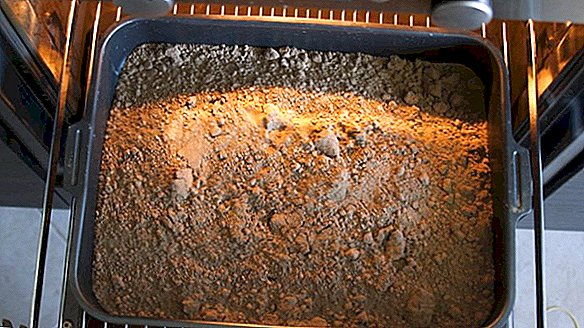
Seed preparation
Preseeding work with seeds directly depends on the source material. The fact is that the suter seeds are very small, so they, as a rule, are not sold in bulk, but in the form of specially prepared granules or dragees, each of which contains from 5 to 7 seeds, often with different types and colors. In this case, neither opening nor soaking such "capsules" is necessary; they are already fully prepared for sowing.
The advantage of this form of seed material implementation is also that from each granule or dragee with good care grows several instances of the plant, which subsequently are transplanted to a permanent place without any picks and, growing, turn into a bright blooming "fountain".
However, if the seedlings are grown from independently collected seeds, they must be prepared for planting to improve germination.
Important! Bacopa seeds retain their germination for three years, so the date of their collection should always be recorded, and when buying seeds in a store, be sure to pay attention to information about the limiting period of use.The traditional method of disinfection is a twenty-minute soaking of seeds in a weak solution of potassium permanganate. You can also use aloe diluted with water or another natural disinfectant.
An effective method of increasing the germination of seeds and strengthening the immunity of young plants is the bubbling procedure. To saturate the seeds with oxygen, you can use an ordinary aquarium compressor, which is placed in a container with water and seeds soaked in it.
It is useful, though not mandatory, to also treat seed materials with growth and growth enhancers (Kornevin, Heteroauxin, Appin, Pure Leaf, sodium or potassium humate, etc.).

Sowing seeds
Bacopa seeds are sown without embedding into the soil. Containers filled with prepared mixture should be poured abundantly, let the water soak a little, then “priporoshit” the soil surface with prepared seeds and if necessary slightly press them to the ground (the easiest way to do this is to spray water from the spray gun carefully).
Since the seeds of the sumer are very small, and the percentage of their germination is not so great, they can be poured onto the surface of the earth quite thickly, without worrying about maintaining the distance between individual specimens.
Germination conditions
Immediately after laying, the seeds of bacopa should be covered with a film or glass to create a greenhouse effect and placed in a well-lit place for germination. The optimum air temperature at this stage is + 20 ... + 23 ° С.
Did you know? Perhaps the most famous type of bakopa is Monnier, also known as Brahmi. This plant occupies an honorable place in Ayurveda, the ancient system of Indian medicine, where it is considered to be an excellent natural stimulator of brain activity that can improve memory, strengthen the nervous system and clean it from all sorts of filth.
Seeds for germination require high humidity, but they should not be watered before germination; this may cause the seeds to go deep into the soil, which will make it more difficult for the germ to reach the surface. The film will prevent the soil from drying out, but nevertheless it must be periodically removed to ensure airing of the soil. If necessary, the surface can be very carefully sprinkled with a spray gun.

Seedling care
With sufficient light and high temperature, the first bacopa sprouts usually appear 10-15 days after sowing. As soon as this happens, young growth should begin to prepare for existence without shelter: the film should not be removed from the container immediately, but gradually increasing the intervals of ventilation. After the covering material is finally removed, drying out of the soil becomes especially dangerous for seedlings, but the excess moisture in the container should also not be allowed. Until the seedlings are mature, watering should be done with a pipette or a disposable syringe without a needle.
An important stage in the cultivation of seedlings - picking (transplanting seedlings into larger containers). In the case of suter, it is carried out twice, and in both cases the seedlings are not thinned, but simply moved together with the earthy clod to a new pot.
General rules for picking Bacopas:
| First picking | Second picks | |
| Timing | The appearance of two true leaves | Two weeks before landing in open ground |
| Technology | Simple movement of seedlings fragments (bundles) in compliance with the scheme 2 × 2 cm | Transplantation of beams with deepening on one internode |
| Air temperature for cultivation after picking | + 22 ... + 26 ° С | + 15 ... + 23 ° C in the afternoon + 13… + 15 ° С at night |
The decrease in air temperature after the second picking should be carried out gradually. This is necessary in order to temper the grown seedlings and prepare it for the upcoming transplant into the open ground.
Transplantation in open ground
Properly grown Bacopa seedlings are an important prerequisite for obtaining a lush and elegant flower bed, but the process of moving young plants to a permanent place is no less important in this regard.
Timing
Bacopa can be planted in open ground at any age, it is only important that the seedlings undergo a preliminary hardening and the soil at the site is warm enough. It is desirable that in the daytime the air temperature should be at a level not lower than + 15 ° С. 
It should also be borne in mind that although the suter is able to endure short-term frosts without loss, such stress can be done only by an adult plant, it can destroy seedlings, therefore night temperatures should not fall below + 15 ° C by transplanting plants to open ground . If we talk about calendar dates, then depending on the region and changeable weather, the right time to land can vary from mid-April to mid-May.
Choosing a place
Bacopa is very demanding on moisture and light. Nisin is best suited for the plant, even a light swamped soil will not interfere with good drainage. If the site has its own reservoir, perennial should be placed somewhere nearby. The suter must be protected from direct sunlight and strong gusts of wind, but it should be remembered that this plant does not bloom very well in the shade.
The composition of the soil of bacopa is not particularly demanding, but grows worse on poor alkaline soil than on fertile soil saturated with humus and other organic matter.
Scheme
Bacopa planting scheme is directly dependent on the plant variety - the higher and larger it is, the greater the distance between the seedlings must be observed. Also a certain role is played by the landscape composition, in which it is planned to enter the ground cover perennial: in some cases, a tight fit is part of the design idea. Based on the above criteria, plants can be planted at a distance of 10 to 30 cm from each other. 
It is not difficult to grow bakopu from seeds, and it does not require special care. Having spent a little time and effort in the spring, and then giving free rein to your imagination, with the help of this plant you can create wonderful vertical or horizontal compositions that will turn any open area into a cozy resting place surrounded by bright but at the same time uniquely delicate flowers.



